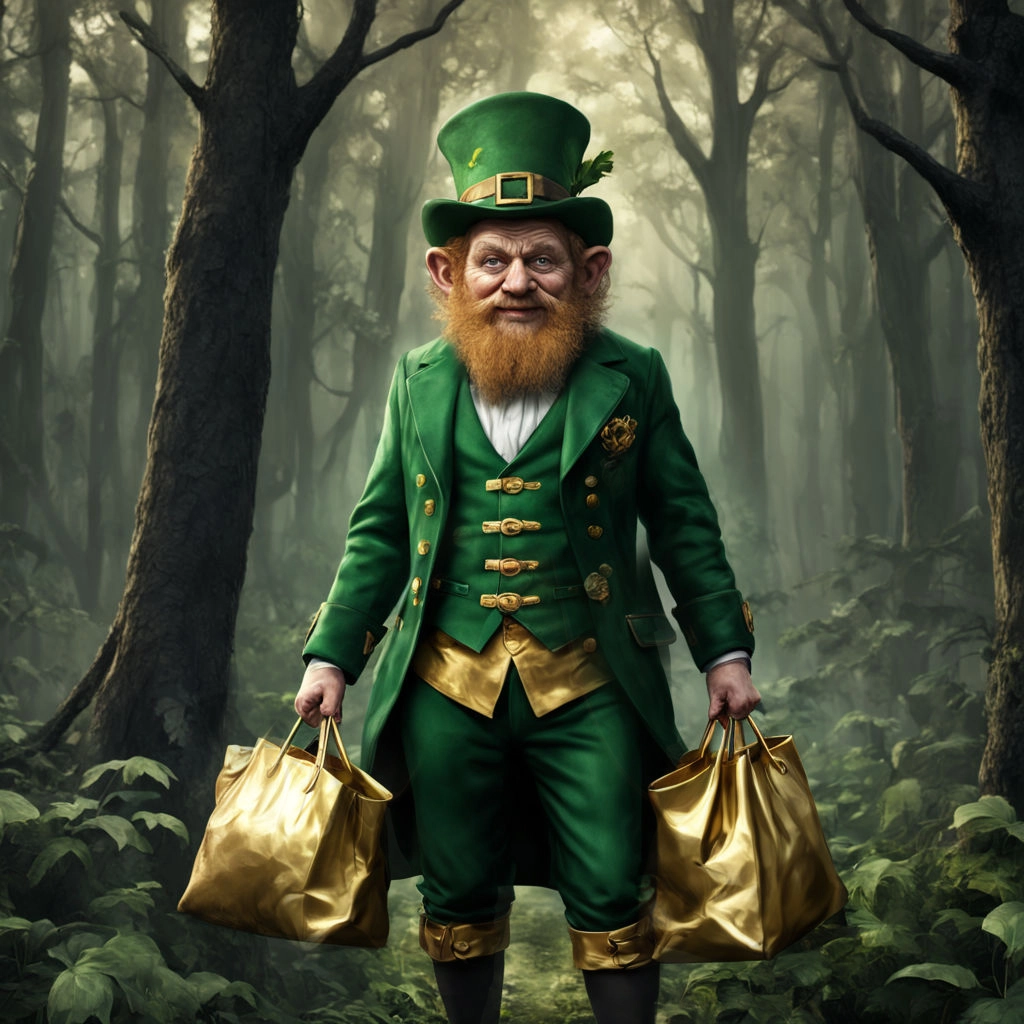Leprechauns: Guardians of Gold and Mischief Makers of Irish Folklore

Iconic Figures of Irish Mythology
Leprechauns are perhaps one of the most iconic figures in Irish folklore, symbolizing both mischief and good fortune. These enigmatic creatures are typically depicted as small, elderly men clad in green suits, complete with buckled shoes and hats. Their trade as shoemakers or cobblers, coupled with their hidden pot of gold at the end of a rainbow, has cemented their status as beloved, albeit elusive, characters in Irish culture.
The Elusive Guardians of Gold
According to legend, leprechauns possess a hidden pot of gold that they guard jealously. The promise of this treasure has led many to attempt the impossible task of capturing a leprechaun. It is said that if you manage to catch one, he will grant you three wishes in exchange for his freedom. However, leprechauns are renowned for their cunning and ability to outwit those who seek their fortune, making them exceptionally difficult to capture.
Mischievous Nature and Playful Pranks
Leprechauns are not just guardians of gold but are also known for their playful and mischievous nature. They delight in playing pranks on humans, such as tying knots in shoelaces or hiding household items. Despite their trickster ways, leprechauns are generally considered harmless and are even viewed as symbols of good luck in Irish culture. Their image is often associated with St. Patrick’s Day celebrations and has become synonymous with Irish identity worldwide.
Historical Roots and Cultural Significance
Leprechauns have deep roots in Irish folklore, predating their widespread recognition in the 19th century. The variations in their names across different regions of Ireland reflect their longstanding presence in the oral traditions of various communities. Ancient tales and place names referencing leprechauns highlight their enduring role in Irish culture. Although their characteristics have evolved over time, leprechauns remain a fascinating aspect of Celtic and Irish folklore.
Mythological Connections: From Lugh to Leprechauns
The connection between Lugh, an ancient Celtic god, and leprechauns adds another layer of depth to the folklore surrounding these mischievous creatures. Lugh, known for his skills and warrior prowess, is believed to have influenced the evolution of the leprechaun’s characteristics. This transformation from a powerful deity to a whimsical figure showcases the rich tapestry of Irish mythology and its impact on cultural beliefs and traditions.
Water Sprites and Ancient Legends
The relationship between leprechauns and Celtic water sprites, such as lúchoirp or luchorpáin, provides further insight into their mythological origins. These small water sprites share similarities with modern leprechauns, particularly in their mischievous nature and diminutive size. “The Adventure of Fergus Son of Léti” is one of the earliest references to these sprites in Irish literature. The tale describes how these beings attempt to carry off the hero Fergus while he sleeps, only to be captured and forced to teach him their swimming skills in exchange for their freedom. This story underscores the cunning and trickery often associated with such supernatural entities.
Conclusion
Leprechauns, with their blend of mischief, mystery, and mythical allure, continue to captivate the imagination. They serve as a symbol of Ireland’s rich cultural heritage, embodying the timeless themes of folklore and mythology. Whether viewed as guardians of hidden gold or playful pranksters, leprechauns remain an enduring and beloved part of Irish tradition, highlighting the intricate connections between ancient myths and contemporary cultural beliefs.

